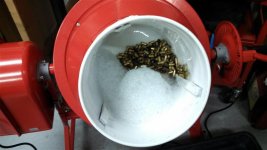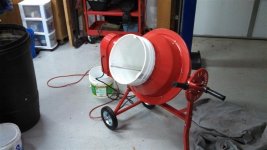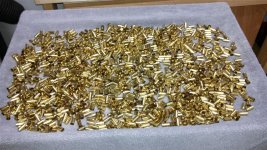
Well . . . Midway had an ultrasonic cleaner from Frankford Arsenal on a closeout sale for $36.50.
Being a sucker for gadgets . . . I ordered one.
It is not impressively fast with home made vinegar, salt and detergent solution, but does work. At first I thought it was a dud because it takes several 8 minute sessions to get 38 special cases clean inside. I never got around to using the small sample of cleaning solution that came with the device.
Then, I found some plain Citric Acid from DudaDiesel on eBay. It arrived in today's mail before I could get to the grocery store to look for Lemi-shine. They offer the same free shipping and excellent prices if you go directly to their web site too.
I used a left over plastic scoop to "measure" and add some of the powdery acid to two quarts of water. The resulting concentration is a little greater than 3% by weight. The only other ingredients are a healthy squirt of dish washing detergent and the ultrasonic cleaner. Here are the results . . . picturing a view of the bases, a side view, and a top view of some Fiocchi brass and Federal nickle plated cases respectively.






Run times in the Frankford Arsenal ultrasonic cleaner were about half what the vinegar mixture required while processing 25 cases at a time with the cases were held vertically by the leftover S&B 45 ACP plastic cartridge box inserts that you can see in the pictures.
I am a happy camper!
Note: Edited to change the concentration calculation to 3%. When I was originally doing the math, I overlooked the fact that I was only mixing a 2 quart batch, not a gallon batch.
Last edited:






